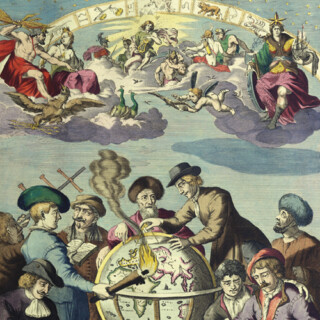Jacopo de Barbari

Surprisingly little is known of the life of Jacopo de Barbari. Estimates of his date of birth vary from 1436-1475, and there is little or no firm evidence as to his place of birth, where he learned his skills, or who was his master. What is known is that he was described as Venetian by his contemporaries, including Albrecht Dürer, Marcantonio Michiel, and Geldenhauer Noviomagus, and that he moved to Nuremberg in 1500 to work for Emperor Maximillian I as a portrait painter and miniaturist. In doing so, de Barbari became the first significant Italian renaissance artist to work in northern Europe.
De Barbari is documented as working in Wittemberg in 1503 for the Great Duke Frederick the Wise of Saxony. In 1504, he met Dürer in Nuremburg and the pair discussed drawing human proportion, although an unpublished draft version of Dürer’s own work on the subject reveals that the Dürer thought the Italian was holding back on him:
“…I find no one who has written anything about how to make canon of human proportions except for a man named Jacob, born in Venice and a charming painter. He showed me a man and a woman which he had made according to measure, so that I would now rather see what he meant than behold a new kingdom… Jacobus did not want to show his principles to me clearly, that I saw well” (as quoted in Levinson Early Italian Engravings from the National Gallery of Art).
In the same year, de Barbari was paid 254 Florins by the emperor for an unknown work made for Anton Kolb. He then moved to the court of the Elector Joachim I of Typeenburg at some point between the years 1506 and 1508. By March of 1510 he was in the employ of Archduchess Margaret in Brussels and Mechelen. In January 1511, he fell ill and made a will, and, in March, the Archduchess gave him a pension for life on account of his age and weakness. He was dead by 1516, leaving the Archduchess with his stock of 23 engraving plates.
His best-known woodcut is his monumental bird’s-eye view of Venice (1500), which was the first comprehensive picture of a city as viewed from its highest buildings. Jacopo signed his paintings and his engravings with a caduceus, perhaps signifying that he was the herald of a new art.







